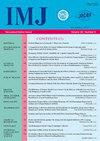富含血小板血浆治疗雄激素性脱发的适宜性分析
Q4 Medicine
引用次数: 2
摘要
对已发表的使用富血小板血浆治疗雄激素性脱发的数据进行了详细分析。基于这些结果,富血小板血浆可能被认为是一种治疗病理性头发相关疾病(包括雄激素性脱发)的新方法。提供了关于血小板形态、活化血小板释放的生物活性物质特征的信息。已证实血小板通过刺激细胞趋化、增殖、分化、血管生成和细胞外基质沉积,在止血和组织再生中起着至关重要的作用。在血小板的许多活性成分参与受损组织的恢复,生长因子已特别注意。生长因子对头发生长周期的调控作用已经确立。在分析其生物学效应的基础上,强调了它们在调节毛发生长中的多样性作用。一些生长因子,如胰岛素样生长因子(IGF)的特征已经被确定和描述,它们在受损组织修复、血管生成、增殖和细胞分化中的作用已经被注意到。本文总结了富血小板血浆在各医学领域应用的实践经验,并提出了将富血小板血浆作为治疗雄激素性脱发的新方法的建议。该方法的标准化问题、研究和证实根据男性和女性雄激素性脱发的阶段区分使用富血小板血浆的问题仍然存在争议。关键词:雄激素性脱发,富血小板血浆,血小板,生长因子本文章由计算机程序翻译,如有差异,请以英文原文为准。
ANALYSIS OF EXPEDIENCY TO USE PLATELET-ENRICHED PLASMA FOR TREATMENT OF ANDROGENETIC ALOPECIA
A detailed analysis of the published data on the use of platelet−enriched plasma for the treatment of androgenetic alopecia has been performed. Based on the results, it has been suggested that platelet−rich plasma may be considered as a new treatment for pathological hair−related conditions, including androgenetic alopecia. Information on platelet morphology, characteristics of biologically active substances released from activated platelets have been provided. It has been substantiated that platelets play a crucial role in hemostasis and tissue regeneration by stimulating the cell chemotaxis, proliferation, differentiation, angiogenesis and deposition of the extracellular matrix. Among the many active components of platelets involved into the recovery of damaged tissue, the growth factors have been particularly noted. The influence of growth factors on the regulation of hair growth cycles has been established. Based on the analysis of their biological effects, the diversity of their action in the regulation of hair growth has been emphasized. Characteristic features of some growth factors, insulin−like growth factor (IGF), have been determined and described, their role in damaged tissue repair, angiogenesis, proliferation and cell differentiation has been noted. The practical experience of application of platelet−enriched plasma in various branches of medicine is summarized, proposals concerning the use of this method as a new way of treatment of androgenetic alopecia have been provided. The question of standardization of this method, study and substantiation of differentiated use of platelet−enriched plasma depending on the stage of androgenetic alopecia in men and women remains debatable.
Key words: androgenetic alopecia, platelet−enriched plasma, platelets, growth factors.
求助全文
通过发布文献求助,成功后即可免费获取论文全文。
去求助
来源期刊

International Medical Journal
医学-医学:内科
自引率
0.00%
发文量
21
审稿时长
4-8 weeks
期刊介绍:
The International Medical Journal is intended to provide a multidisciplinary forum for the exchange of ideas and information among professionals concerned with medicine and related disciplines in the world. It is recognized that many other disciplines have an important contribution to make in furthering knowledge of the physical life and mental life and the Editors welcome relevant contributions from them.
The Editors and Publishers wish to encourage a dialogue among the experts from different countries whose diverse cultures afford interesting and challenging alternatives to existing theories and practices. Priority will therefore be given to articles which are oriented to an international perspective. The journal will publish reviews of high quality on contemporary issues, significant clinical studies, and conceptual contributions, as well as serve in the rapid dissemination of important and relevant research findings.
The International Medical Journal (IMJ) was first established in 1994.
 求助内容:
求助内容: 应助结果提醒方式:
应助结果提醒方式:


